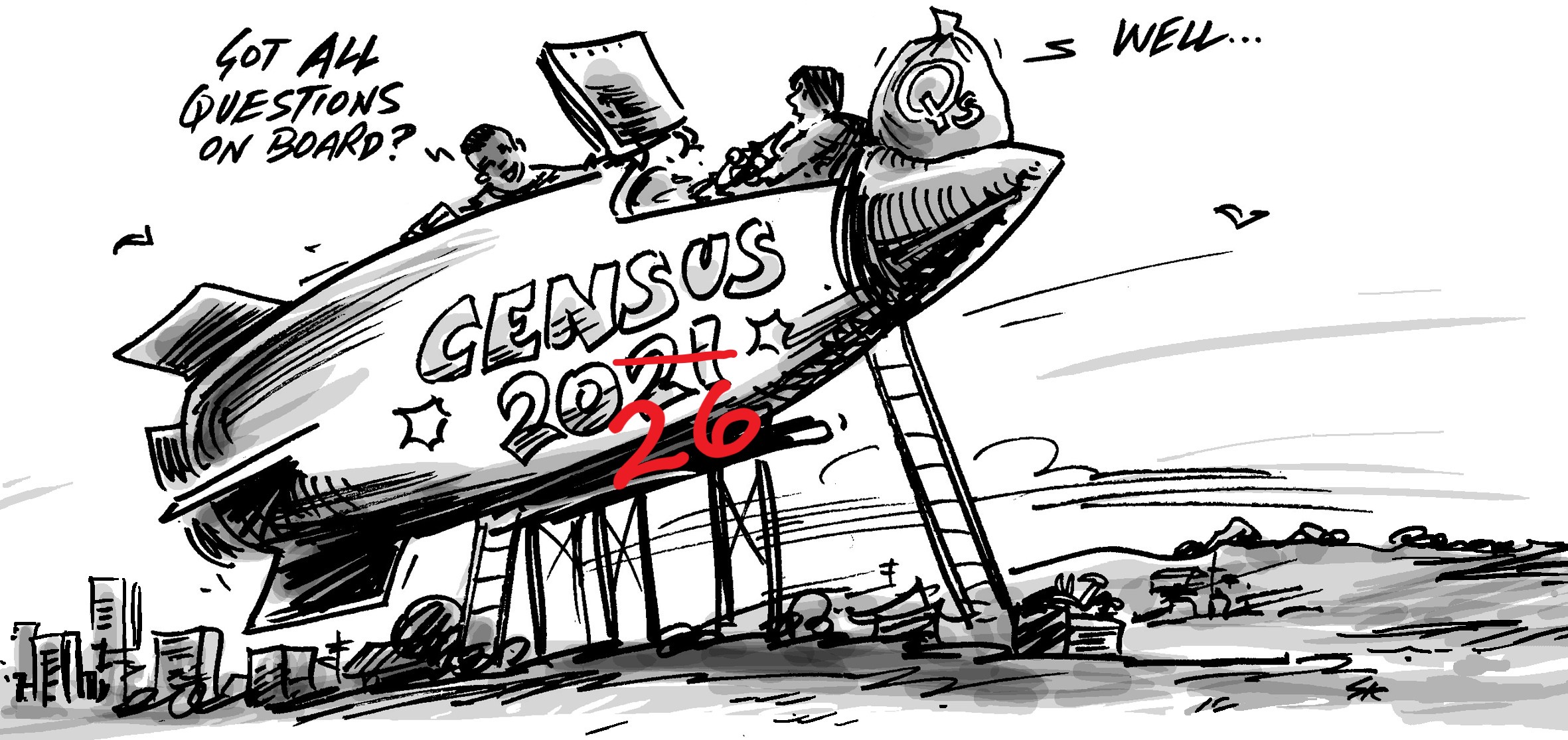BLOG
Where have jobs been growing, or declining?
Where have jobs been growing, or declining?
The 2021 Census provides place of work estimates for small areas across Australia. This data can be highly useful in understanding the structure and change of key employment precincts in your LGA.
Every 5 years we get an indication of which small areas are growing or declining in terms of jobs. Between Census periods, .id is the only organisation providing consistent LGA employment data based on where employees work rather than where they live. However, censuses allow us to dig deeper at sub-LGA level geographies. Data on employment change at a place of work level is crucial for strategic planning for precincts development, transport infrastructure, and council services.
Largest job nodes
In a recent blog, I noted that the Statistical Area 2 (SA2) named ‘Sydney – Haymarket – The Rocks’ had by far the most amount of jobs in Australia in 2016. The ABS issued new SA2 geographies for some areas in 2021 including for Sydney and Melbourne. However, as noted in the previous blog, it is still difficult to do straight comparisons of SA2s due to difference in geographies.
Putting that aside, the largest SA2 for jobs in Australia in 2021 was Sydney (North) – Millers Point with just over 290,000 jobs reported on Census night. However, due to geography size differences, the densest SA2 for jobs in 2021 was Melbourne CBD – East with over 130,000 jobs per square km.
Top 15 SA2s for 2021 Census reported jobs
| SA2 (2021 Geography) | 2021 Estimated Census Jobs | Area of SA2 (km2) | Job Density (Jobs per km2) |
|---|---|---|---|
| Sydney (North) - Millers Point | 290,697 | 3.2 | 90,498 |
| Brisbane City | 146,393 | 2.4 | 61847 |
| Perth (West) - Northbridge | 133,799 | 4.6 | 29,386 |
| Adelaide | 119,861 | 10.5 | 11,434 |
| Melbourne CBD - West | 112,180 | 1.0 | 111,611 |
| Melbourne CBD - East | 104,517 | 0.8 | 130,320 |
| Docklands | 85,451 | 2.4 | 34,964 |
| Dandenong - South | 57,819 | 53.8 | 1,075 |
| North Sydney - Lavender Bay | 56,482 | 1.9 | 29,507 |
| Macquarie Park - Marsfield | 52,732 | 10.7 | 4,941 |
| Sydney (South) - Haymarket | 52,468 | 1.1 | 48,537 |
| Parramatta - North | 47,353 | 2.2 | 21,194 |
| Hobart | 42,097 | 6.6 | 6,362 |
| Civic | 40,048 | 1.4 | 27,988 |
| Geelong | 36,060 | 12.8 | 2,813 |
The ABS also produces Place of Work job estimates for even smaller geographies called Destination Zones. Destination Zones (DZNs) are co-designed with state and territory transport authorities to aid transport policy development. DZN job estimates are great for sub-LGA level planning so .id publishes jobs by industry at DZN level for all our clients on economy.id within the Small Areas Data section.

Using DZNs, I was able to get a better estimate of the size of our major CBDs. I pulled the 2021 DZN job estimates for locations within a 30min walk of the GPO in capital cities. This gave me approx. 454,000 jobs within a 30 minute walk of Melbourne’s Town Hall and 447,000 for Sydney. Amazingly close! Brisbane was of course third with 229,000, Perth was 161,000 and Adelaide was 130,000.
Job change between census periods
In order to compare change between 2016 and 2021 at a sub-LGA level, we need to ensure we are comparing the right geographies. As I noted above, the ABS created some new SA2s in 2021 so I have used ABS developed SA2 correspondences to estimate jobs change at an SA2 2016 geography.
So what did I find? Well, the largest jobs growth for an SA2 was Docklands in inner Melbourne. An extra 27,900 people stated that it was their main workplace in 2021, up 48% from 2016. Perth and Brisbane also grew strongly in a raw numbers term. Sydney – Haymarket – The Rocks and Melbourne SA2s had relatively weak growth in comparison. This was largely due to COVID policy impacts. Some of Sydney and Melbourne CBD’s workers might have falsely put their place of work as home (instead of their method of travel to work) due to being in lockdowns. However, most of the weak growth was due to falls in hospitality employment because of overseas travel and social distancing restrictions. For example, the Sydney – Haymarket – The Rocks SA2 workforce in Accommodation and Food was more than 8,000 less than that recorded in 2016.
The greatest falls in jobs occurred in Ashburton (WA) and Weddell (NT) SA2s. These two locations were home to massive resource-based projects that had transitioned from construction (high jobs) to production (lower ongoing jobs) phases. Interestingly, they were in the top 10 for jobs growth between 2011 and 2016. Boom and bust indeed. Sydney Airport SA2 was also naturally heavily impacted by flight restrictions.

What about in % terms? Well, as might be expected the largest growth areas for jobs were….well growth areas! In fact 9 out of the top 10 for % growth where change was greater than 500 jobs were in outer metro growth areas.
Top 10 SA2s for % growth 2016 to 2021
N.B. Jobs change < 500 have been excluded
| Region | SA2 (2016 Geography) | Difference (Numbers) | Difference (% change) |
|---|---|---|---|
| Greater Melbourne | Mickleham - Yuroke | 1,953 | 283% |
| Greater Melbourne | Cranbourne West | 2,540 | 245% |
| Greater Perth | Alkimos - Eglinton | 1,169 | 226% |
| Greater Melbourne | Wollert | 1,359 | 201% |
| Greater Perth | Hope Valley - Postans | 899 | 169% |
| SE QLD | Pimpama | 2,729 | 168% |
| Canberra | Parkes (ACT) - North | 1,248 | 154% |
| SE QLD | Ripley | 1,045 | 149% |
| Greater Sydney | Cobbitty - Leppington | 5,651 | 130% |
| Greater Melbourne | Truganina | 9,242 | 128% |
It is important to note that looking at change between census periods contains some inaccuracies. There tends to usually be an undercount in Censuses and this varies by location. However, in 2021 because large parts of Victoria and NSW were in lockdown, the ABS estimates the undercount for these states was actually very minimal. Therefore increases in responses (and number of residents/jobs) for these states, especially the metro, between 2016 and 2021 may appear larger than what they really were due to a larger undercount in 2016.
How you can use detailed place of work data
Place of work employment data helps councils understand the growth and/or transition occurring within key employment precincts. This analysis combined with other datasets such as building approvals and business numbers can inform planning and investment strategies.
An example of this is the City of Banyule who engaged .id to develop an economic profile of the Heidelberg Major Activity Centre (HMAC) and Heidelberg West Business Park (HWBP). We utilised DZN level employment estimates, amongst other data sources, to prepare a comprehensive precinct analysis. It not only identified the impacts of COVID restrictions, but also analysed industry trends, competitive advantages, investment activity, catchment growth and employment projections.
The precinct analysis allowed council to:
- understand the importance of precincts to their economy and each precinct’s competitive advantage,
- understand the drivers influencing precincts and even sub-precincts within them, and
- identify funding / program and investment opportunities that were aligned with the precincts’ strengths.
If you are from a council and believe you would benefit from understanding the changing role and capacity of your local precincts, get in touch with us at economics@id.com.au
Keenan - Economic Development Specialist
Keenan is an economic development specialist who has worked extensively analysing and developing economic programs, strategies and policies to help local communities. Keenan works with our local government clients to help them explore and understand how their regions are changing over time to help them make better decisions and create evidence-based strategies related to local economic development.









